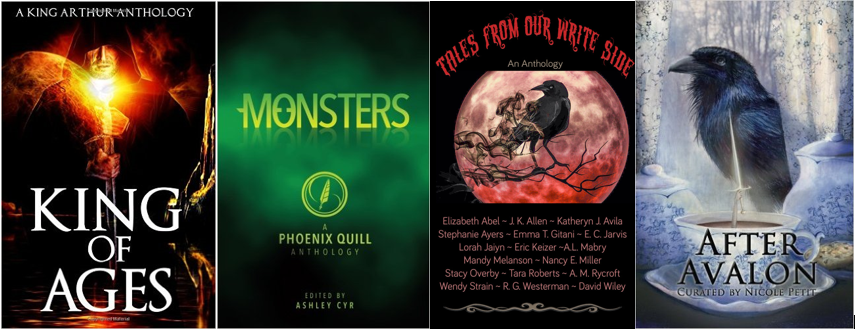Tags
Anglo-Saxon, Book Review, John Blair, Medieval, Medieval Book Club, Michael D.C. Drout, The Anglo-Saxon Age: A Very Short Introduction

Welcome to the first ever Medieval Book Club post on this blog. Here I will share some of my thoughts on the book, some observations on the material itself, and open a few questions toward you, the reader.
In case you missed it, for February we’re going to be reading two Anglo-Saxon Poems: Genesis A & B. Those poems are ones you can read free online, just follow the link to my preview post and you will find the link there to the poems. I hope you can join me for next month’s discussion as well, and I’ll be keeping this going all year long with posts on every third Thursday of each month in 2017.
My Thoughts: I really enjoyed this little book. It seemed to me like a perfect gateway book into the time period of the Anglo-Saxons, providing just enough information to give you some familiarity yet not so much as to overwhelm a reader who is new to that period of history or, quite frankly, isn’t big into reading history books. There were times and places where I wished there was a little more information, such as Alfred the Great (who earned only a single page), but I also understand the need for brevity. This is, after all, a very short introduction. Enough to whet the appetite rather than to sate the reader.
The size of the volume is perfect, being both thing and short to make it very portable. It is the sort of book that could fit in a purse or a pocket or even squeezed into a very full suitcase. Everything inside is in black and white, but even without color the maps and pictures included are nice and help to enhance the reading experience of the book. There aren’t many images along the way, but there doesn’t need to be. I also love the recommended reading at the end, providing some books that were referenced in compiling the information and organizing things into topics.
All in all, I loved this book for what it was. It was an excellent way to kick off a reading kick into the Angl0-Saxon time period, and has certainly managed to make me want to read more about some of the events, kings, and battles that took place over the course of this era.
Observations: There is a lot of stuff crammed into such a short space. They could have probably done one of these books for each chapter within this book and still not covered everything in the detail required. I couldn’t help, while reading, to remember the acronym MCGVR (MacGyver) that Dr. Drout mentioned in his Anglo-Saxon course:
M – Migration of tribes to England, approx. 500-600 A.D.
C – Conversion to Christianity, approx. 600-700 A.D.
G – Golden Age of Anglo-Saxon culture, approx. 700-800 A.D.
V – Viking Raids and destruction of Anglo-Saxon culture, approx. 800-900 A.D.
R – Reform and rebuilding of Anglo-Saxon culture, approx. 900-1000 A.D.
While those numbers are rounded to make things easier to remember, it is a fairly good way to remember the key periods in Anglo-Saxon history, with just the period from 1000-1066 being left off there.
I find the conversion period to be an interesting one, with some rulers embracing Christianity, others rejecting it but allowing their sons to practice it. The first Anglo-Saxon Christian kings appear during that period and it is always interesting to see how the religion slowly seeped into the culture and society. I also love reading about the Viking raids, a period rife with wars and conquests and, of course, King Alfred. It is a period covered in the TV Show The Last Kingdom by BBC, based on the series of books by Bernard Cornwell.
So I look forward to eventually reading more about those two parts of the Anglo-Saxon history in particular, as well as learning more about a few of the figures from history. Obviously, King Alfred is one. Edward the Confessor and Aethelred the Unready would make for interesting figures to study, as they were the ones leading into the conquest of 1066. Hengest and Horsa were supposedly figures that Thomas Jefferson really loved (and he was an Anglo-Saxonist himself, believing that the government of this time period was among the greatest in history and he wanted people to learn Old English). There is, as I’ve mentioned, so much history in this period that could be covered. I haven’t even touched on the battles, such as the Battle of Hastings in 1066.
The image I loved the most was, of course, the map of Anglo-Saxon England in there. I want one of those for my office wall!
Questions: Okay readers, here are some questions for you:
- What were your overall impressions about the book? For what it claims to be (a very short introduction), does it accomplish that task well?
- What period in the Anglo-Saxon history interests you the most (see the MCGVR for a breakdown, but don’t forget that 1000-1066 is an option as well!)?
- What figures mentioned in the book interested you enough that you’d want to read more about them?
- Are there any battles, or series of battles, that you’d like to read more about?
- Any additional thoughts you might have about the book.
